EFS is a built-in security feature on your NTFS. If you look closely, this part of filesystem-level encryption surprisingly serves it’s purposes — adding a new layer of security to your files and folders. And not just in the recent OS versions, EFS has provided valuable service since Windows XP.
Anyway, this encryption system has some drawbacks. In recent times, thousands of Windows users discovered that the encrypt contents to secure data option is grayed out in NTFS EFS.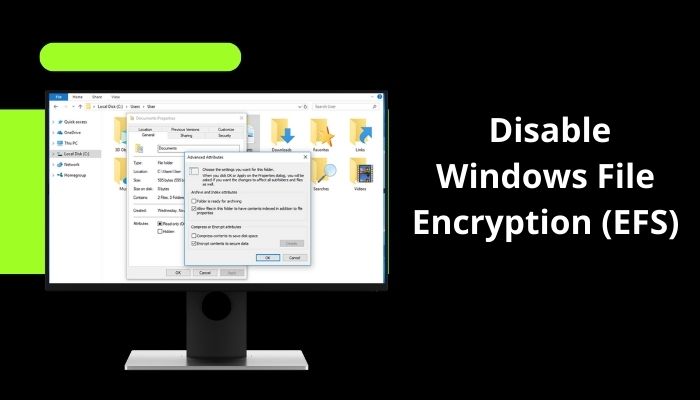
Disabling the file encryption system is the perfect solution if you are facing the same issue. But don’t know how to disable EFS?
This article is totally for you. Here, I’ll cover some basic information about the EFS and how you can easily enable/disable the encrypting file system.
So, let’s start.
What is Windows Encrypting File System?
EFS (encrypting file system) is simply an OS-based encryption system that allows you to encrypt/decrypt existing files on your computer. When you enable EFS, it adds a layer of security to your files so that other users can’t access sensitive files and folders.
EFS uses public key encryption technology to save intruders from reaching your file access. Before even that, EFS applies the Advanced Encryption Standard (AES) Cipher to build a robust cryptographical system. And this totally complicated system is free of cost.
Our computer system uses NTFS technology to store and recover files. When EFS is enabled, unauthorized users can’t join our file system. Hence, the protection remains active.
Though EFS is a built-in feature for Windows operating systems, some people find it ineffective. Also, most of them utilize better encryption systems (not free, obviously) to protect their file from anonymous hackers.
It’s totally up to you whether you want to enable/disable EFS on your Windows PC. Either way, check out the following section to know how to remove EFS encryption from files in Windows 10 and Windows 11.
Take note that EFS is not available on the home versions of Windows 10/11.
Check out the easiest way how to use Windows 11 installation Assistant.
How to Disable Windows Encrypting File System (EFS)
Open the Windows Services menu by searching services.msc in the search box. Find the Encrypting File System in that menu and double-click to modify the service > Click on the Startup Type dropdown menu and set it as disabled. That action will disable the encrypted content to secure data option.
Those are the initial steps you should follow to disable the NTFS EFS file in Windows 10/11. You can use different methods to remove EFS encryption from Windows.
Read the following section to find out those methods.
Here are the methods to disable Windows File Encryption:
1. Remove EFS from Windows using the Command Prompt
Using the command prompt is by far the most effective way to disable WIndows file encrypting system. Read the steps and work accordingly.
Here are the steps to turn off file encryption via command prompt:
- Type cmd in the Windows search box.
- Right-click on the command prompt and select run as administrator.
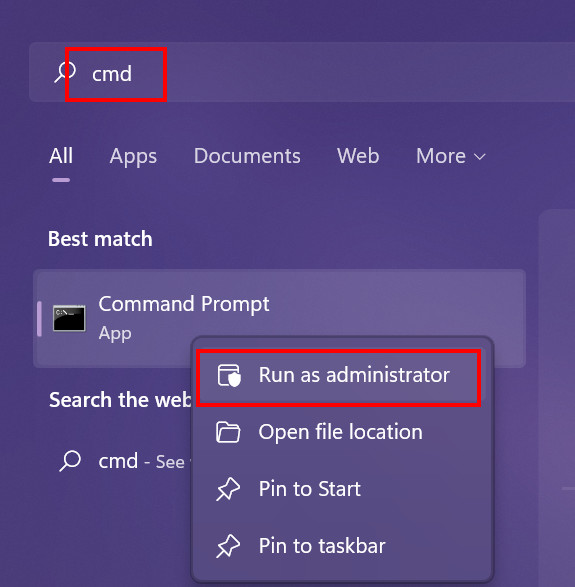
- Copy this command; fsutil behavior set disableencryption 1.
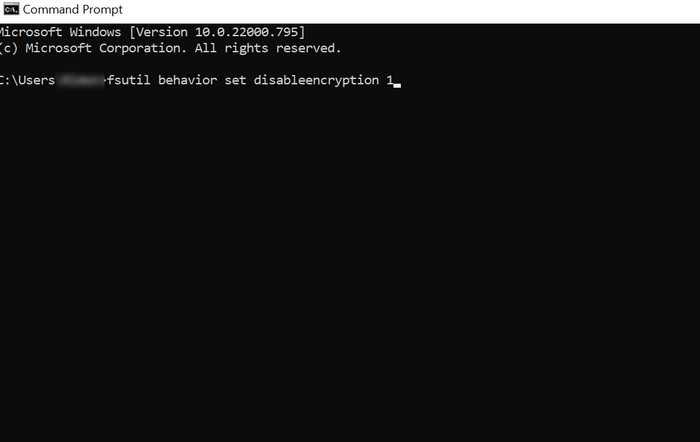
- Paste the command into the prompt and hit Enter.
That command line will disable the file encryption in Windows 11/10. To enable the encryption, type fsutil behavior set disableencryption 0 in the command prompt and press Enter.
If the EFS is still enabled, try the following solution.
Check out our separate post on 10 Best Free Widgets and Gadgets on Windows 11.
2. Disable File Encryption Windows via Local Group Policy Editor
Tweaking the local group policy editor is also an effective technique to disable automatic encryption from Windows. This method works for Windows 11/10 pro and professional plus.
Here are the steps to disable file encryption in Windows through the local group editor:
- Type Windows + R to launch the Run prompt.
- Write gpedit.msc in the prompt and hit Enter.
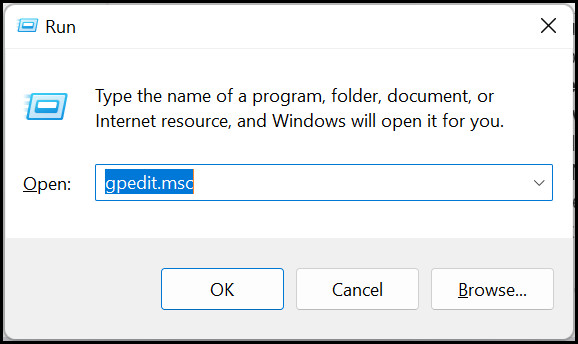
- Double-click on Computer Configuration.
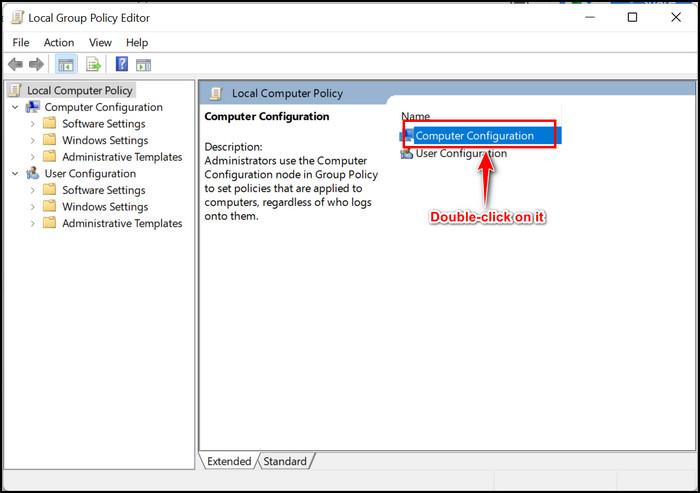
- Navigate to Administrative Templates > System > Filesystem > NTFS.
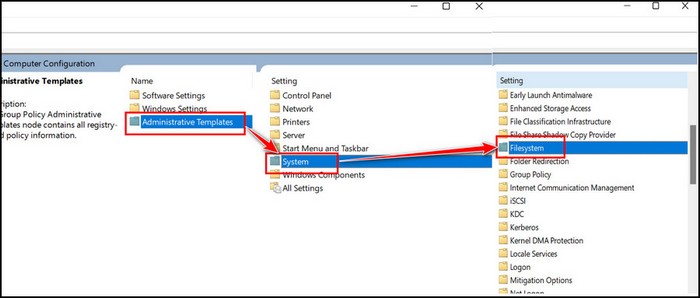
- Double-click on Do not allow encryption on all NTFS volumes setting.
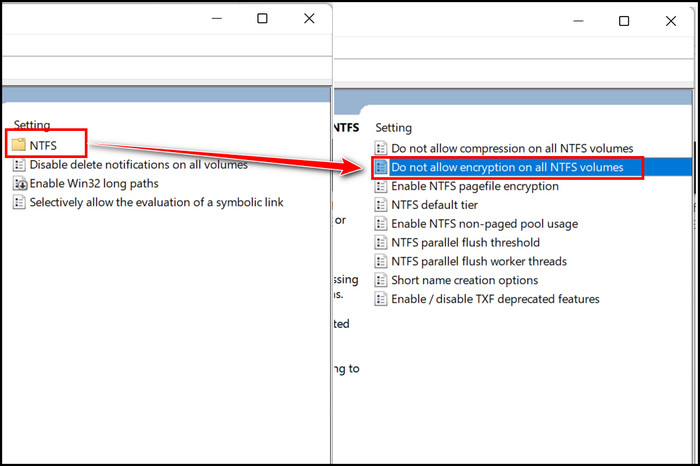
- Select Enabled/Disabled/Not Configured according to your requirement.
- Enabled – Remove EFS file encryption from Windows.
- Disabled – Activate EFS encryption to NTFS files and other file systems.
- Not Configured – Default system settings.
- Click on Apply > Ok after choosing to disable EFS file encryption.

Restart the computer to activate the changes on your computer. After that, check whether the EFS is disabled or not. Implement the following solution if not.
Also, check out our separate post on how to Access iMessage on Windows 11/10.
3. Tweak Local security Policy to Disable File Encryption
Local security policy indicates the security system of a local computer. Changing some of the policies may help you to enable/disable file encryption.
Here’s the procedure to modify the security policy to remove EFS from Windows:
- Press Windows + R to open the Run command.
- Type secpol.msc and hit Enter to launch the Local Security Policy.
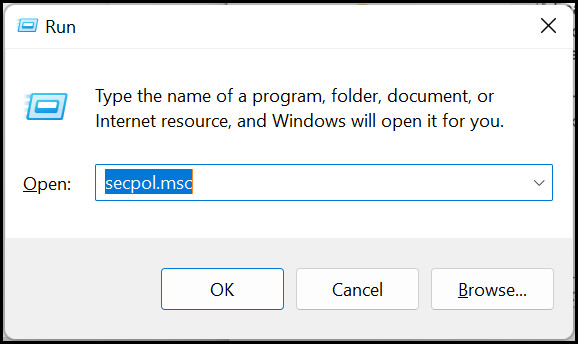
- Navigate to Security Settings.
- Expand the Public key policies option.
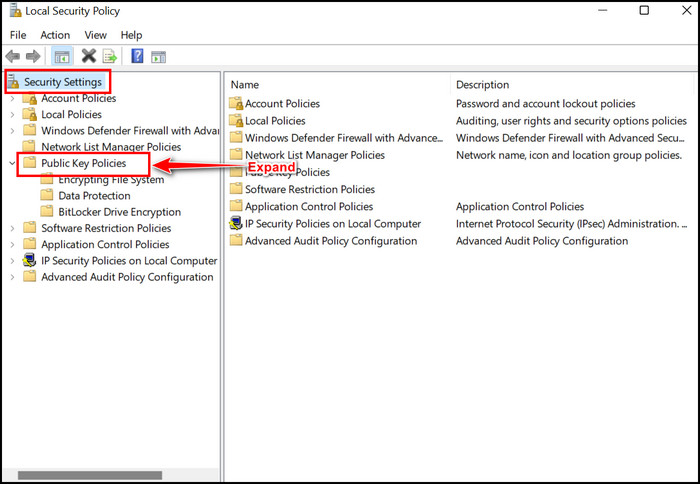
- Right-click on the Encrypting File System option and select Properties. A new window named encrypting file system properties will pop up.
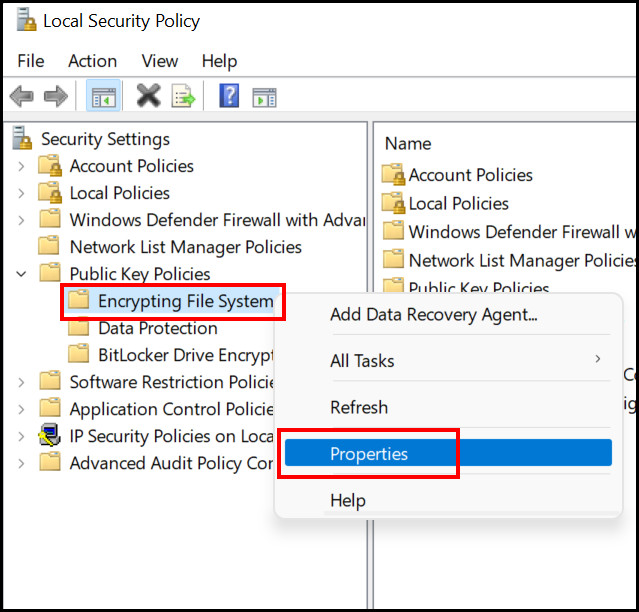
- Choose not defined/don’t allow from the General tab to disable NTFS EFS.
- Click on Apply > Ok to save the changes.
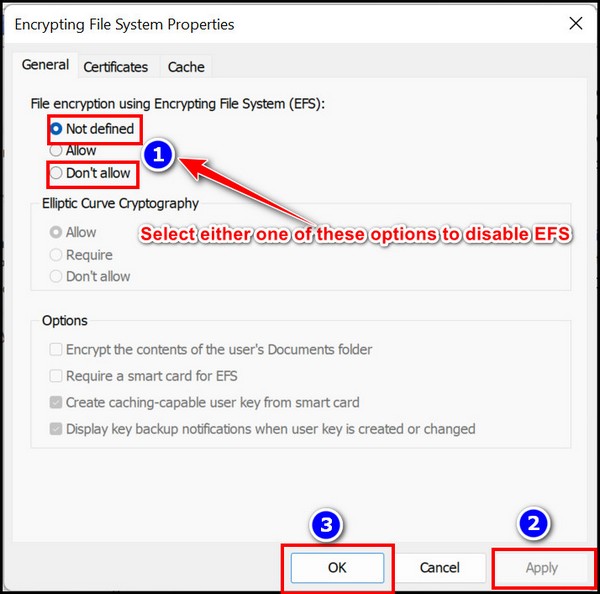
Note: Select Allow after the popup window appears to enable EFS in Windows 10/11.
This is a 100% working method to remove NTFS EFS from your computer. Also, you can try further solutions to remove encryption from all files in Windows.
You may also like to read: How to Quickly Create a Sleep Timer in Windows 11.
4. Use Windows Services to Enable/Disable EFS
The services tool helps you to modify the core settings of your Windows computer. Try the following procedure to deactivate EFS from Windows 10/11.
Here’s the process to disable automatic encryption from Windows using services:
- Search for services.msc in the Windows search menu and press Enter.
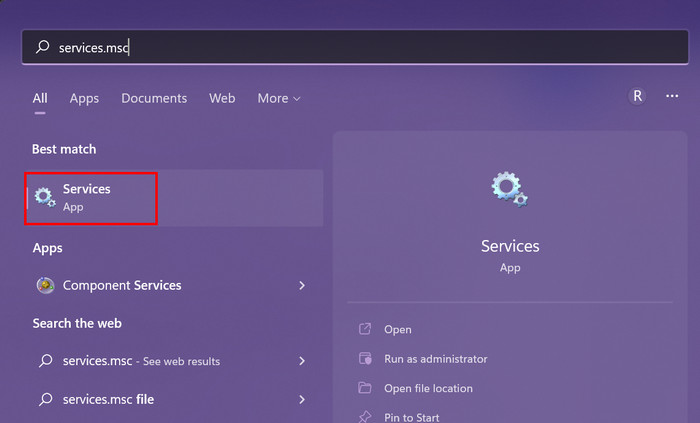
- Locate Encrypting File System (EFS) in the Services menu and double-click on it.
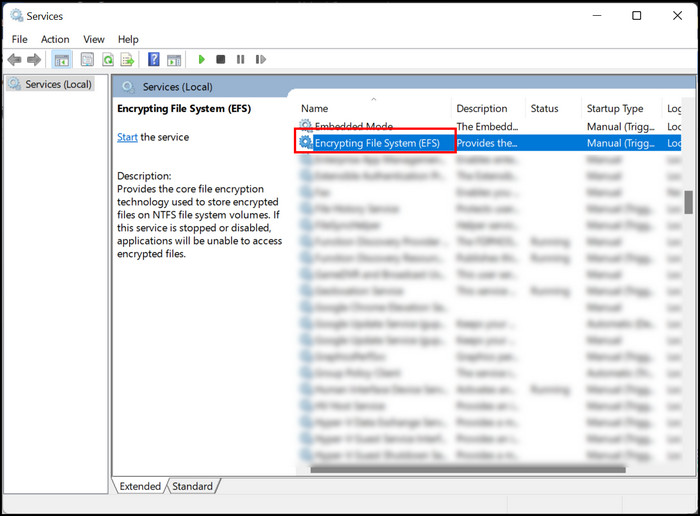
- Go to the General tab when the popup window appears.
- Click on the Startup Type drop-down menu and select disabled.
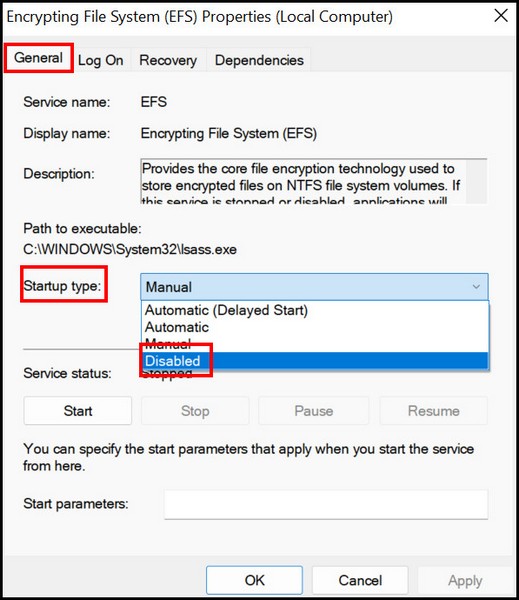
- Press Apply, then Ok to save the changes.

In case this process couldn’t help you disable NTFS EFS, the following technique might. Check out the further method to enable/disable file encryption.
5. Modify Registry Editor to Disable/Enable NTFS File Encryption
Registry Editor is a graphical tool for changing the Windows registry. Changing registry editor values allow you to try different settings on the operating system.
Here are the steps to remove EFS encryption from files by tweaking the registry editor:
- Press Windows + R key to launch the Run command box.
- Type Regedit and press Enter to open the Registry Editor.
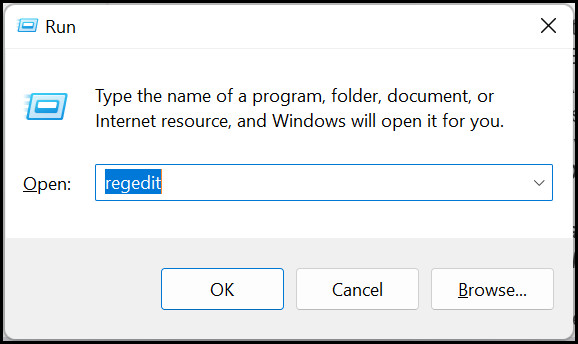
- Navigate to HKEY_LOCAL_MACHINE > SYSTEM > CurrentControlSet > Policies.
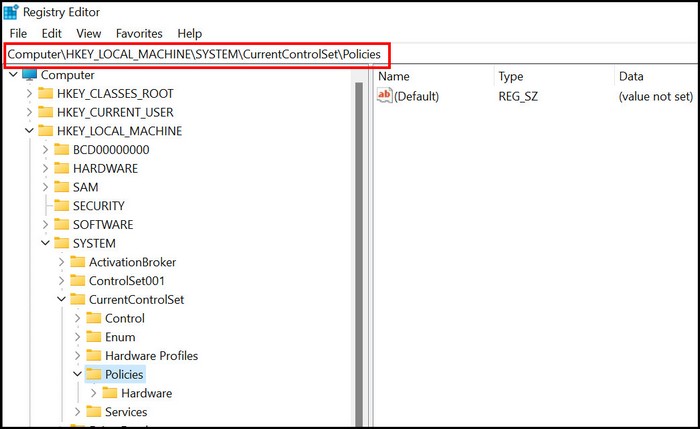
- Right-click on any empty space on the window and select New > DWORD (32-bit) Value.
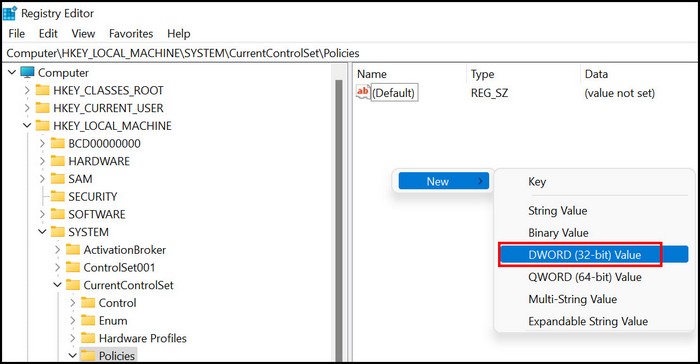
- Set the name of this new value as NtfsDisableEncryption.
- Double-click on the NtfsDisableEncryption and change the value data to 1.
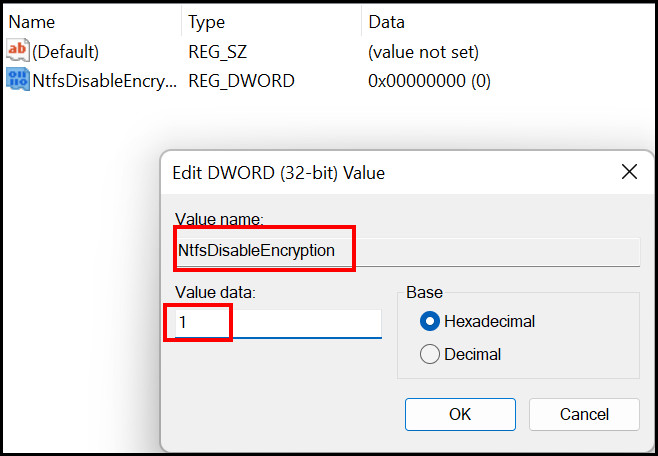
Note: When you set the value as 1, it will disable the EFS encryption. Set the value data to 0 if you want to enable the NTFS EFS system.
These are the solutions that helped me disable the NTFS file encryption in Windows 11. If you have further queries regarding EFS, read the further section to clear out your confusion.
Frequently Asked Questions
How do I disable encrypted contents to secure data?
Run the cmd as an admin > Copy this command in the prompt; fsutil behavior set disableencryption 1 > Press Enter.
How do I remove encryption from a file?
Right-click the encrypted file or folder you want to decrypt > click on Properties > Go to the General tab > click on Advanced > Untick encrypt contents > Ok.
How do I enable EFS in Windows 10?
Go to the registry editor > Navigate to HKEY_LOCAL_MACHINE > SYSTEM > CurrentControlSet > Policies > Double-click on NtfsDisableEncryption > Change the value to 1.
Wrapping Up
In this entire guide, I helped you provide valid information about the EFS system on Windows. And most importantly, the exact way to disable NTFS EFS in Windows.
To recap the methods, first, run a simple command in cmd, then tweak the local group policy editor a bit. Followed by some changes in the system registry editor. That’s the ultimate method to remove EFS.
However, if any of the methods seem difficult while taking action, my comment box is always open for you. Enjoy!




